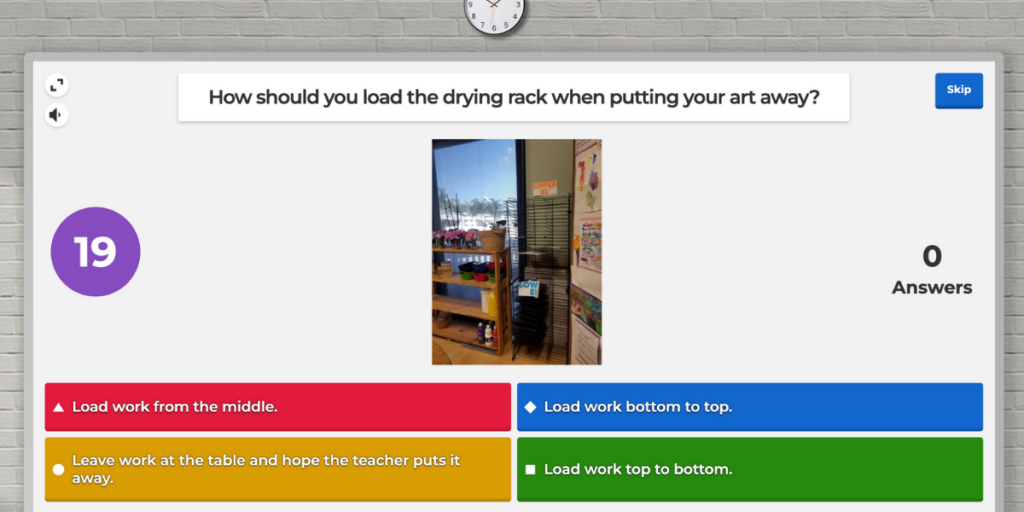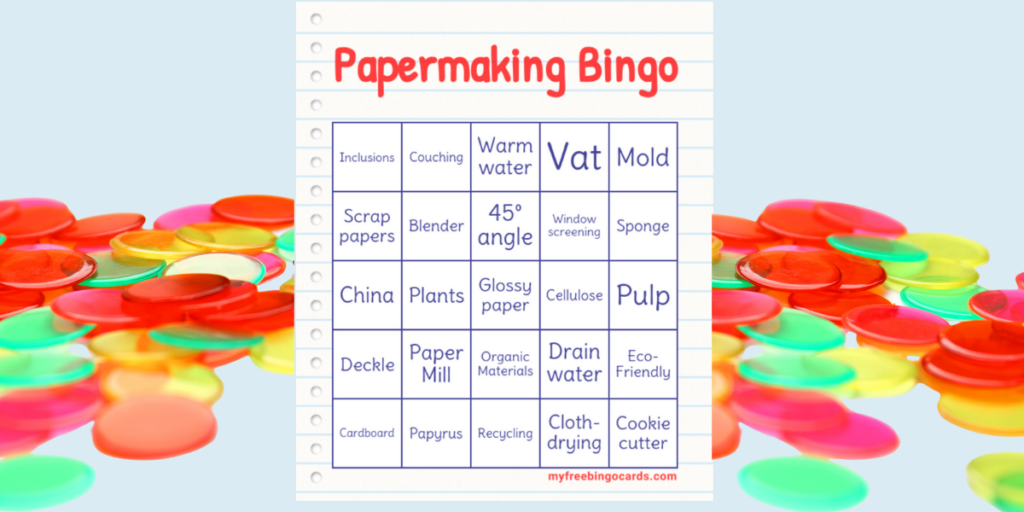Every teacher wants to start their school year off on the right foot. Why not do it with a great game? Playing games with students taps into their innate sense of free-spirited fun and reduces stress. Meanwhile, games allow you to reinforce content and concepts. Games are an undercover way to spark collaboration and improve communication as a team-builder. Games help groups feel more comfortable and connected.

What Games Teach Us About Classroom Management
First, well-planned games provide an opportunity for relationship building. In turn, this creates a safe space. Game playing is the language of children. They are an easy inroad for getting to know one another, fostering camaraderie, and allowing student leaders to emerge. Academically, games can teach new material and are helpful when rehearsing vocabulary, reviewing for tests, and assessing learning. Games make learning fun!
Organizing and participating in games builds empathy between students and teachers. Students often realize how challenging it is to direct a group, communicate, and work towards a common goal. According to Berkley’s Greater Good Science Center, students who internalize this are more likely to show prosocial behavior, demonstrate kindness and inclusion, and are more cooperative in class. Empathy is essential for running a smooth classroom and accomplishing tasks. Friendly competitions also help students increase their intrinsic motivation and facilitate a growth mindset.
Delegate Roles
One way to ensure any game runs smoothly and more collaboratively is to assign jobs. Shift out of your role as the classroom teacher to that of a team manager. Once you learn the ins and outs of a particular game, determine what jobs pop up. Assign roles to students so you can step back. It also allows students to step up and be more autonomous. Note that more than one student can be assigned a particular role if you rotate each round. This approach is especially appealing to those who do not wish to participate competitively but want to support the team.
For four roles you can give to students, take a look at our complimentary download, 4 Collaborative Game Playing Roles. Check out our PRO Pack, Games in the Art Room. You can find this resource and more like this in PRO Learning.
Download Now!
Other roles you can assign may include:
- Scorekeeper: Keep a tally of the scores.
- Timekeeper: Oversee the start and end of each round and monitor the clock for cleanup.
- Host: Review the rules, lead the players in each round, and maintain positive morale and good sportsmanship.
- Judge/Quality Control: Reset materials after each round and check for fairness.
- Cheer Crowd: Hype peers, support players, and generate excitement.
Focus Attention
When it comes time to play a game, the energy in the room can become palpable. Focus students’ attention using one of our Art Teacher Hacks, such as the call and response lyric game. Another fun song to use is Tubthumping by Chumbawamba. Teach them that when you say, “I get knocked down,” they respond with “but I get up again,” and you will be ready to give directions in no time!
After reviewing the rules and expectations, divide the class into teams as needed. Make sure you have a plan for this ahead of time so there is no delay in starting the game. For example, they can count off, split by table groups, or separate by birthdate.
Tech-Based, Seated Games
1. Kahoot
This online game-learning platform allows users to customize games (called Kahoots) to play. Students can compete over quizzes, formative assessments, learning new art topics, getting to know their teachers, and any other reason you want to challenge their knowledge! Kahoot is an easy peasy setup if you have access to technology. Different game styles are customizable with your photos, GIPHY’s library of GIFs, YouTube video links, or Getty Images.

Timeframe: Customizable, but allot 20–30 minutes to start.
Materials Needed:
- Host computer
- Ability to project host computer’s screen
- Computers, tablets, or cell phones with internet for each player
- Kahoot platform login (The Basic Plan with Quiz and True/False options are free.)
Goal: To win the highest amount of points by answering the most questions with accuracy and speed.
Rules and How to Play:
- Design the game by following the prompts on the Kahoot platform or customize a game created by someone else.
- Rules vary depending on the style of game chosen, but each player must select one of the response options to get points.
- The game will automatically tally the score as you go along.
2. Art Heads
This funny, easy, and low-risk “blind-contour” game is a perfect ice-breaker for the art room. Good for warmups, Art Heads helps students transition mentally from their previous class. Curated drawing prompts can connect students with the topic of study on hand. This is a silly game that students can appreciate from elementary to high school.
Additionally, this game is unlike others when judging a winner. Art Heads is entirely subjective. The judge can pick work that closely resembles the prompt, least closely resembles it, or whichever image resonates with them. This out-of-the-box system creates friendly competition, reinforcing that the game is all about fun. However, you and the students will be surprised by the impressive art that will emerge. This game really gets students talking!

Timeframe: Customizable. You can design the game to last for five minutes or 25 minutes, so it’s very versatile for your schedule.
Materials Needed:
- Host computer
- Ability to project host computer’s screen
- Sketchbook or paper on a clipboard/sturdy surface for each player
- Marker for each player
- Slideshow of line drawings to replicate
Goal: To “replicate” the drawing projected on the screen without looking.
Rules and How to Play:
- Create a slideshow of simple line drawings that gradually become more complex. Place only one image per slide.
- Select a student judge to pick a winner for the first round.
- Ask students to place their open sketchbook or paper attached to a clipboard on top of their heads.
- Set a timer for 20–60 seconds, depending on the complexity of the drawing.
- With markers ready, ask students to view the first projected image from the slideshow and recreate the image without looking at their drawing.
- The judge picks a winner based on personal criteria, such as the accuracy of the drawing, how creative it looks, the least accurate, etc.
- The first winner has the option to become a judge or pass the role on to a different player.
- Repeat the process with each new slide.
Customizable Classic Games
3. Bingo
This is a classic game beloved by many for the anticipation it builds. Bingo is a classroom staple, and, through technology, the online game is fully customizable and free to create. Bingo cards are perfect for rehearsing vocabulary, reviewing procedures, or studying for a test.
In this version of Bingo, note that the content in the columns and rows varies from the traditional game. Players must match the content according to the game-style pattern indicated at the start of the game. Game-style pattern ideas include straight-line, diagonal, four corners, and filling the card.

Timeframe: Dependent on the “luck of the draw” and game-style pattern. “Fill the Card” takes the longest to complete. The average time per round is about 20 minutes but can end much faster.
Materials Needed:
- Host/Bingo Caller computer
- Free bingo cards
- Terms are cut into individual strips and placed in a bowl, bucket, or a bingo spinner
- Printer
- Bingo daubers, markers, chips, or torn paper to cover/mark squares
Goal: Shout “Bingo!” after successfully covering terms matching those called, according to the game style chosen.
Rules and How to Play:
- Pass out printed bingo cards to each student and a method for marking/covering their card.
- Give all terms that appear on the bingo cards to the Bingo Caller.
- The Bingo Caller announces what type of game is in play, such as straight, diagonal, four corners, fill the card, etc.
- The Bingo Caller stirs up the paper strips and calls out the definition of the term (without saying the term), then selects a student to guess the answer.
- Once the correct answer is announced, each student covers the term with a marker on their bingo card.
- The Bingo Caller continues in this fashion until a player calls “Bingo!”
- Verify the winning board. The player can call out their terms, and the Bingo Caller can check the player’s card.
- After each win, clear the scorecards and start a new game.
4. Heads Up
This entertaining guessing game originated on the Ellen DeGeneres Show. Originally made with physical cards held to the forehead, it has been developed into a mobile app. More recently, it has been adapted into a board game using headbands. This fast-paced game is great for the art room because you can create themed decks for any topic of interest.

Materials Needed:
- 200+ index cards with art terms printed/written on them
- Marker
- 60-second timer
Goal: Guess the highest number of answers correctly.
Rules and How to Play:
- Divide into 2–3 teams and split the deck of index cards so there is one deck per team.
- Choose the first person who will have to guess. The remaining players offer clues.
- The guessers each have a deck of index cards facedown in front of them. The guesser will hold a card up to their forehead with the term facing out so they can’t see it.
- Start the timer.
- The guesser’s team will shout out clues, “act it out,” sing songs, offer fill-in-the-blanks, etc., to help the guesser say the term on the card. The only word(s) the team can’t say is the term(s) on the card.
- The guesser has 60 seconds to answer as many cards in their deck as possible.
- The team can “pass” one card during each round. If the team gives an illegal clue, they must pass that card and pick another one.
Active, Team-Based Games
5. Marshmallow Wars
This is a fun team-building game. Like dodgeball, any game where you are throwing something toward someone needs to have the rules, boundaries, and consequences laid out. Time each round between one to three minutes.

Materials Needed:
- Two tables facing each other, about 20 feet apart
- Ten cups for stacking in a pyramid
- One to two bags of jumbo marshmallows
- Two chairs, optional
Goal: Stack a pyramid of cups before the opposing team has a chance to knock them down.
Rules and How to Play:
- Divide into two teams, with a designated cup stacker for each. The cup stacker can sit or stand behind the table the cups will be stacked on.
- The rest of the players defend their cup stacker from incoming marshmallows and throw marshmallows to knock their opponent’s cup pyramid down.
- Players can only throw from behind their table where the cup stacker is seated.
- Any player can retrieve marshmallows from the ground. But they must go back behind the table for throwing. Players throwing from anywhere else must sit out.
- Cup stackers continuously try and complete their pyramid until one team is successful or time runs out.
- Any player or cup stacker may retrieve fallen cups, but only the cup stacker is allowed to stack the cups.

6. Candy Cane Olympics
This game takes its inspiration from Nic Hahn. Not only are the Candy Cane Olympics hilarious to watch, but this is an excellent relay game that encourages collaboration. The learning curve is part of the fun when controlling the headband-candy cane hook. Students are usually very uncoordinated at first, so it can be a positive empathy builder. Connect this concept to other new things they have tried, like realistic drawing and learning to cut with scissors. With any new skill or task, we may be awkward at first. After some practice, we gain confidence and competency!
While the game looks easy, students quickly discover that strategy, communication, and problem-solving as a team are required to gain an edge over their opponents. I was happily surprised that my middle school students did not tire of this game. They played for our entire 50-minute class!

Materials Needed:
- Four bins to hook candy canes onto, about 20 feet apart
- One to two packages of candy canes (plus extra in case any break)
- Ribbon and string
- Tape
Goal: Move as many candy canes from the starting bin to the ending bin.
Rules and How to Play:
- Divide into teams. The more bins you have, the more teams you can have. Note that each team requires two bins.
- Create teams of three players. Each player wears a headband with a string attached and a candy cane secured at the end like a fishing hook.
- Two bins are placed at one end of the room with six candy canes hooked on the edges.
- Players line up at the opposite end of the room near their empty bin.
- One player at a time from each team will attempt to hook one candy cane from the bin onto the candy cane headband.
- Then, players walk it to the other side of the room, where they drop the candy cane inside an empty bin.
- The second player can take their turn as soon as the first player successfully drops off the candy cane.
- Players continue in order until all candy canes are transferred or time runs out.
- Teams have three minutes to try and transfer all six candy canes.
Winners, Losers, and Prizes
There are no losers when you are not playing for a “prize.” The goal of game playing is to enhance learning and provide stress relief. While I rarely offer physical or treat-based prizes, I do give students art room rewards. These rewards usually benefit the entire class and tie directly into the art room. The “winning” team can earn a privilege for the class like free seating or choosing the topic for the next drawing warmup, First 5.
Other ideas include:
- Have an “art outside” day
- Choose the classroom music playlist
- Pick the next medium we work with
- Lead the class for the day
Making Management Fun
Classroom management is something you build and maintain all year long. It fluctuates throughout the seasons but doesn’t have to be a headache. It’s never too soon or too late to use games to support your classroom management.
The beginning of the school year is a valuable time to introduce games. Students receive so much new information and may experience sensory overload. They need opportunities to connect with their classmates, and they appreciate a teacher who recognizes this. Games are excellent for encouraging community, collaboration, and problem-solving. All of these make classroom management infinitely more fun!
For more resources on games in the art room, check out the following:
- 6 Games Perfect for the Art Room
- 5 Online Games Your Students Will Love
- Games in the Art Room Pack in PRO Learning
- 5 Games to Put an Artistic Twist on Field Day
- 3 Super Fun Art History Games
What are your favorite games to play in the art room?
How do you use games as classroom management tools?
Magazine articles and podcasts are opinions of professional education contributors and do not necessarily represent the position of the Art of Education University (AOEU) or its academic offerings. Contributors use terms in the way they are most often talked about in the scope of their educational experiences.







